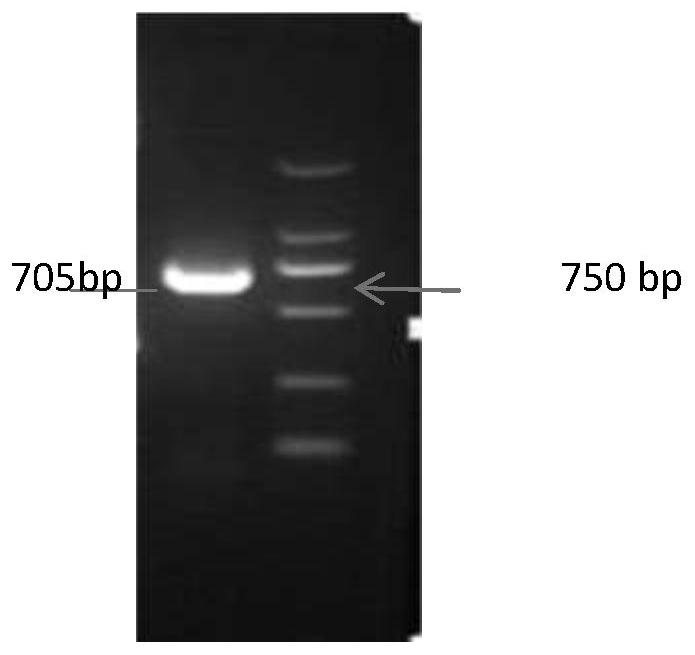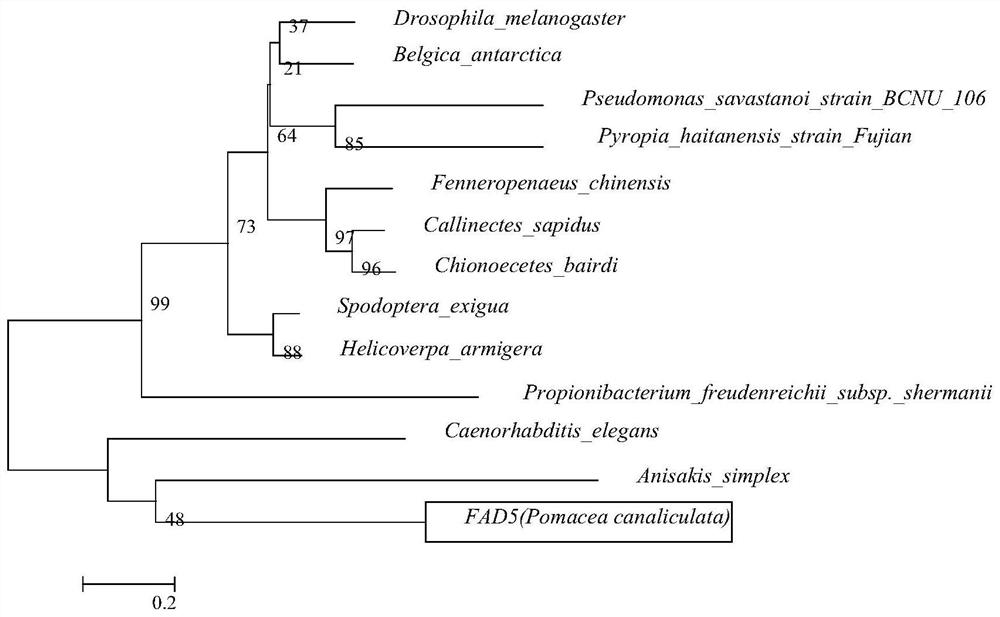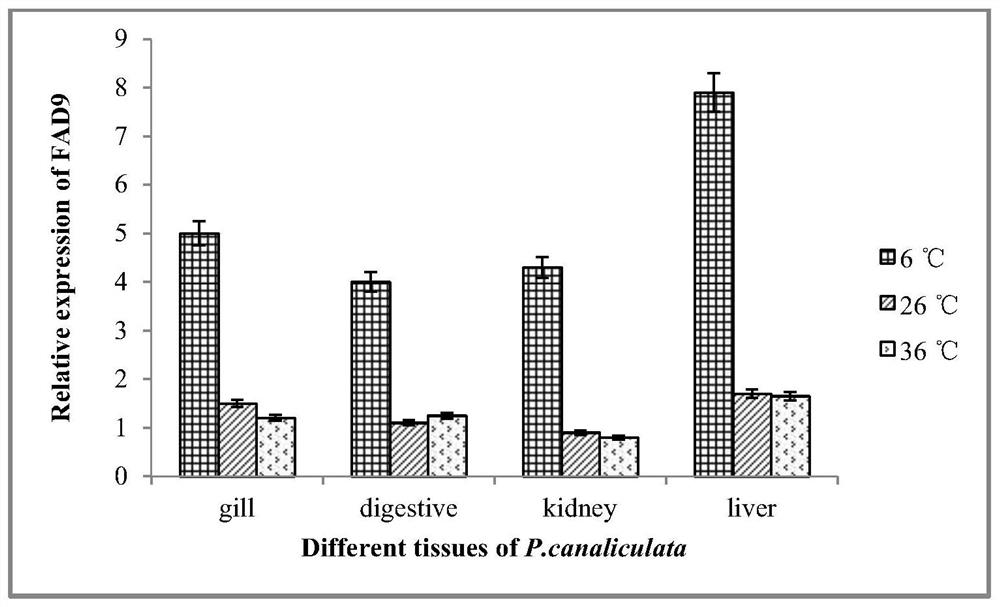Low-temperature tolerance-related gene fad9 of apple snail, its encoded protein and its cloning method
A low temperature tolerance, apple snail technology, applied in genetic engineering, plant genetic improvement, botanical equipment and methods, etc., can solve the problem of no relevant research reports on the function and role of FAD9 gene, and achieve high positive rate and strong credibility , highly reproducible effect
- Summary
- Abstract
- Description
- Claims
- Application Information
AI Technical Summary
Problems solved by technology
Method used
Image
Examples
Embodiment 1
[0038] Example 1. Extraction of total RNA from apple snail muscle tissue and synthesis of cDNA
[0039] (1) Take 10mg-50mg of fresh apple snail liver tissue, wash it with DEPC water for 3-5 times, and quickly store it in liquid nitrogen;
[0040] (2) Extraction of total RNA: Grind the liver tissue of the apple snail into fine powder under liquid nitrogen conditions, and then transfer it to a centrifuge tube containing 0.3-0.5 mL of cell lysate; extract the total RNA of the liver tissue;
[0041] (3) The cDNA of apple snail liver tissue was synthesized by reverse transcription and stored at -20°C for later use.
Embodiment 2
[0042] Embodiment 2. The design of the apple snail FAD9 gene degenerate primer
[0043] Search the amino acid sequence of FAD gene in NCBI database, select the amino acid sequence of FAD9 from different species, and then use CODEHOP program to design degenerate primers.
[0044] The main steps of using CODEHOP to design primers are as follows: save the amino acid sequences of the different species queried above in FASTA format, and submit the results to Blockmaker (http: / / blocks.fhcrc.org / blocks / make_blocks.html) to make conserved regions Then submit the obtained conserved region to the server for primer design. The main parameters of the design are: degeneracy (Degeneracy) 128; annealing temperature (Temperature) 60°C; genetic code (Genetic code): standard, try Select primers with low degeneracy, suitable Tm value and target fragment length and send them to the company for synthesis. The designed primer sequences are as follows:
[0045] Upstream primer UP1: 5'-TCGTATgaytay...
Embodiment 3
[0053] Example 3. Cloning of apple snail FAD9 gene
[0054] UP1 and UP2 were amplified by PCR with designed demerger primers to obtain a 705bp FAD9 intermediate fragment ( figure 1 ). The PCR reaction system is 25 μL: 10xrTaq buffer 2.5 μL, dNTPs (each 10 nmol / L) 0.5 μL, MgCl 2 (25mM) 1.5μL, cDNA 1μL, Taq enzyme 0.5μL, add ddH2O water to make up to 25μL. The PCR reaction program was: 95°C for 30s, 58°C for 45s, 72°C for 1min, 35 cycles; 72°C for 10°C extension.
[0055] Using the FAD9-3F, FAD9-3R primer pair, a 2100bp 3' end fragment was amplified.
[0056] Using the FAD9-5F, FAD9-5R primer pair, a 425bp 5' end fragment was amplified.
[0057] The above amplified fragments were spliced using DNAman software to obtain the full-length sequence of the apple snail FAD9 gene with a full length of 2334bp. The nucleotide sequence and amino acid sequence of the full-length gene ORF are respectively provided by SEQ ID NO:1 and SEQ ID NO:2.
[0058] Based on the amino acid seque...
PUM
 Login to View More
Login to View More Abstract
Description
Claims
Application Information
 Login to View More
Login to View More - R&D
- Intellectual Property
- Life Sciences
- Materials
- Tech Scout
- Unparalleled Data Quality
- Higher Quality Content
- 60% Fewer Hallucinations
Browse by: Latest US Patents, China's latest patents, Technical Efficacy Thesaurus, Application Domain, Technology Topic, Popular Technical Reports.
© 2025 PatSnap. All rights reserved.Legal|Privacy policy|Modern Slavery Act Transparency Statement|Sitemap|About US| Contact US: help@patsnap.com



